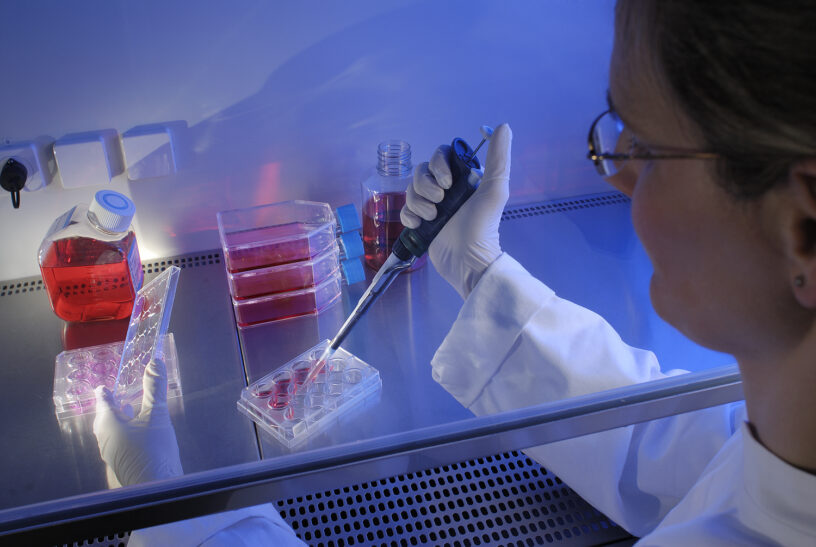In Vivo Toxicology Market size was valued at USD 6.25 Billion in 2024 and is projected to reach USD 9.11 Billion by 2031, growing at a CAGR of 5.31% from 2024 to 2031.
In Vivo Toxicology Market Overview
The In Vivo Toxicology Market focuses on testing chemicals, drugs, and other substances directly in live organisms (usually animals) to study the effects on biological systems. It plays a critical role in assessing drug safety, environmental chemicals, agrochemicals, food additives, and other substances before they are approved for human use or environmental exposure. In vivo toxicology studies provide crucial data on the potential toxic effects of substances on whole living organisms, helping to assess risk factors for humans, animals, and ecosystems.
Key Factors Driving the Market
- Increased Pharmaceutical R&D:
- The pharmaceutical industry relies heavily on in vivo toxicology studies for drug development and regulatory approval.
- Pros: Growing investments in R&D to discover new therapies for diseases such as cancer, autoimmune disorders, and neurological diseases increase demand for in vivo testing.
- Cons: Rising costs of animal studies and ethical concerns over animal use may push companies toward alternative testing methods.
- Rising Regulatory Requirements:
- Government agencies like the FDA, EMA, and EPA require in vivo toxicology data for safety assessments before approving drugs, chemicals, and environmental agents.
- Pros: Stringent regulatory requirements for safety testing drive demand for in vivo toxicology services.
- Cons: Lengthy regulatory processes can delay product development timelines, adding to costs.
- Growing Environmental Concerns:
- The environmental impact of industrial chemicals, pollutants, and other substances is a major concern. In vivo studies assess the long-term ecological and human health risks posed by these chemicals.
- Pros: Demand for toxicology studies in the agrochemical and environmental sectors is increasing due to concerns over pesticide and chemical safety.
- Cons: Increased environmental testing standards could lead to higher operational costs for companies involved in these sectors.
- Advancements in Toxicology Technologies:
- New technologies like CRISPR/Cas9 gene-editing, advanced imaging techniques, and biomarkers are improving the precision and accuracy of in vivo toxicology studies.
- Pros: Technological advancements enhance the reliability of toxicity data and reduce the number of animals required for testing.
- Cons: Implementation of advanced technologies may require significant investments, potentially limiting adoption by smaller players.
Market Segmentation
By Product Type
- Animal Models
- Rodents (Mice, Rats): Widely used due to their genetic similarities to humans and relatively short lifespans.
- Pros: Rodents are the standard models for assessing systemic toxicity in drug development.
- Cons: Ethical concerns and variability between animal and human biology can affect translatability of results.
- Reagents and Assays
- Includes chemicals, reagents, and assays used in toxicology studies.
- Pros: Reagents and assays are critical for executing studies, driving demand as the number of studies increases.
- Cons: Expensive reagents may increase the cost of conducting toxicology studies.
- Instruments
- Devices used for analyzing biological responses, such as imaging systems, blood analyzers, and monitoring tools.
- Pros: Advanced instrumentation provides more precise measurements of toxicological effects.
- Cons: High cost of these instruments can be a barrier for smaller research institutions.
By Test Type
- Acute Toxicity Testing
- Short-term exposure to a substance to evaluate immediate toxic effects.
- Pros: Critical for assessing the initial safety of drugs and chemicals.
- Cons: May not provide data on long-term effects or chronic toxicity.
- Chronic Toxicity Testing
- Long-term studies to assess the cumulative effects of a substance.
- Pros: Provides insights into long-term health risks, important for assessing environmental and pharmaceutical safety.
- Cons: Requires more resources, time, and animals, making it costly and time-consuming.
- Carcinogenicity Studies
- Assess the potential of substances to cause cancer after prolonged exposure.
- Pros: Carcinogenicity data is critical for pharmaceutical approval and chemical risk assessments.
- Cons: These studies are lengthy and expensive.
- Developmental and Reproductive Toxicology (DART)
- Focuses on the effects of substances on reproductive health and fetal development.
- Pros: Key for evaluating drugs and chemicals that may affect pregnancy and development.
- Cons: Complex and ethically sensitive due to the need for gestational animal models.
By End-User
- Pharmaceutical and Biotechnology Companies
- These companies conduct in vivo toxicology to assess the safety and efficacy of new drug candidates.
- Pros: Pharmaceutical firms represent the largest market segment due to the high demand for preclinical studies.
- Cons: Increasing R&D costs and regulatory scrutiny can slow down drug development pipelines.
- Contract Research Organizations (CROs)
- CROs conduct toxicology studies on behalf of pharmaceutical, chemical, and environmental companies.
- Pros: The outsourcing of toxicology studies is growing, driven by the need to reduce costs and accelerate timelines.
- Cons: Quality control and consistency issues may arise when outsourcing studies.
- Academic and Research Institutions
- Universities and research centers conduct in vivo toxicology for basic science research and public health studies.
- Pros: Academic institutions are key players in early-stage toxicology research.
- Cons: Limited budgets and reliance on government funding can restrict the scale of toxicology studies.
- Environmental and Industrial Laboratories
- Conduct environmental toxicology studies for assessing the impact of chemicals and pollutants.
- Pros: Growing environmental regulations drive demand for toxicology studies in industrial sectors.
- Cons: These studies can be resource-intensive and costly.
Market Challenges
- Ethical Concerns Over Animal Testing
- Growing public concern about the ethical treatment of animals has led to increased pressure to adopt alternative testing methods.
- Cons: Regulatory agencies still require animal testing for many substances, limiting the impact of alternatives.
- High Costs and Time-Consuming Processes
- In vivo toxicology studies are costly, and lengthy processes can delay product development.
- Cons: Rising costs and long timelines can discourage smaller companies from conducting extensive in vivo studies.
- Regulatory Scrutiny
- Increasing regulatory demands for transparency and safety can delay approvals and increase costs.
- Cons: Navigating complex regulatory environments adds to the time and expense of toxicology testing.
Market Trends
- Shift Toward Alternative Testing Methods
- There is a growing interest in in vitro and in silico (computer-based) methods that reduce or replace animal testing.
- Pros: These methods are gaining traction due to their lower costs, shorter testing times, and ethical advantages.
- Cons: Current alternative methods still lack the complexity required to fully replace in vivo testing.
- Integration of AI and Machine Learning in Toxicology
- AI and machine learning are being integrated into toxicology studies to analyze large datasets and predict outcomes.
- Pros: These technologies can enhance the efficiency and accuracy of toxicology studies.
- Cons: AI tools require significant computational resources and expertise to implement effectively.
- Growing Focus on Personalized Medicine
- The rise of personalized medicine is driving demand for toxicology studies that assess individual responses to drugs and treatments.
- Pros: Personalized approaches can lead to safer and more effective therapies.
- Cons: Customizing toxicology studies for individual responses may increase costs and complexity.
- Emergence of 3D Bioprinting and Organoids for Toxicity Testing
- Advanced techniques like 3D bioprinting and organoids are being explored as alternatives to animal models.
- Pros: These methods offer more physiologically relevant models while reducing the need for animal testing.
- Cons: They are still in the developmental stage and may not fully replace animal testing in the near future.
Click Here, To Get Free Sample Report https://stringentdatalytics.com/sample-request/in-vivo-toxicology-market/15047/
Market Segmentations:
Global In Vivo Toxicology Market: By Company
Thermo Fisher Scientific
Danaher
Charles River Laboratories
Labcorp
The Jackson Laboratory
Data Sciences International
Envigo
Eurofins Scientific
Perkinelmer
SRI International
Taconic Biosciences
Wuxi Apptec
Global In Vivo Toxicology Market: By Type
Chronic Toxicity Testing
Sub-Chronic Toxicity Testing
Sub-Acute Toxicity Testing
Acute Toxicity Testing
Global In Vivo Toxicology Market: By Application
Immunotoxicity
Systemic Toxicity
Carcinogenicity
Genotoxicity
Developmental and Reproductive Toxicity(DART)
Other Toxicity Endpoints
Global In Vivo Toxicology Market: Regional Analysis
The regional analysis of the global In Vivo Toxicology market provides insights into the market’s performance across different regions of the world. The analysis is based on recent and future trends and includes market forecast for the prediction period. The countries covered in the regional analysis of the In Vivo Toxicology market report are as follows:
North America: The North America region includes the U.S., Canada, and Mexico. The U.S. is the largest market for Cold-chain Pharma in this region, followed by Canada and Mexico. The market growth in this region is primarily driven by the presence of key market players and the increasing demand for the product.
Europe: The Europe region includes Germany, France, U.K., Russia, Italy, Spain, Turkey, Netherlands, Switzerland, Belgium, and Rest of Europe. Germany is the largest market for Cold-chain Pharma in this region, followed by the U.K. and France. The market growth in this region is driven by the increasing demand for the product in the automotive and aerospace sectors.
Asia-Pacific: The Asia-Pacific region includes Singapore, Malaysia, Australia, Thailand, Indonesia, Philippines, China, Japan, India, South Korea, and Rest of Asia-Pacific. China is the largest market for Cold-chain Pharma in this region, followed by Japan and India. The market growth in this region is driven by the increasing adoption of the product in various end-use industries, such as automotive, aerospace, and construction.
Middle East and Africa: The Middle East and Africa region includes Saudi Arabia, U.A.E, South Africa, Egypt, Israel, and Rest of Middle East and Africa. The market growth in this region is driven by the increasing demand for the product in the aerospace and defense sectors.
South America: The South America region includes Argentina, Brazil, and Rest of South America. Brazil is the largest market for Cold-chain Pharma in this region, followed by Argentina. The market growth in this region is primarily driven by the increasing demand for the product in the automotive sector.
Click Here, To Buy Premium Report https://stringentdatalytics.com/purchase/in-vivo-toxicology-market/15047/?license=single
Key Points:
- Define, describe and forecast The Global Market by type, application, end user and region.
- Provide enterprise external environment analysis and PEST analysis.
- Provide strategies for company to deal with the impact of COVID-19.
- Provide market dynamic analysis, including market driving factors, market development constraints.
- Provide market entry strategy analysis for new players or players who are ready to enter the market, including market segment definition, client analysis, distribution model, product messaging and positioning, and price strategy analysis.
- Keep up with international market trends and provide analysis of the impact of the COVID-19 epidemic on major regions of the world.
- Analyze the market opportunities of stakeholders and provide market leaders with details of the competitive landscape.
About Stringent Datalytics
Stringent Datalytics offers both custom and syndicated market research reports. Custom market research reports are tailored to a specific client’s needs and requirements. These reports provide unique insights into a particular industry or market segment and can help businesses make informed decisions about their strategies and operations.
Syndicated market research reports, on the other hand, are pre-existing reports that are available for purchase by multiple clients. These reports are often produced on a regular basis, such as annually or quarterly, and cover a broad range of industries and market segments. Syndicated reports provide clients with insights into industry trends, market sizes, and competitive landscapes. By offering both custom and syndicated reports, Stringent Datalytics can provide clients with a range of market research solutions that can be customized to their specific needs.
Contact Us
Stringent Datalytics
Contact No- +1 346 666 6655
Email Id- sales@stringentdatalytics.com
Web- https://stringentdatalytics.com/




Leave a Reply